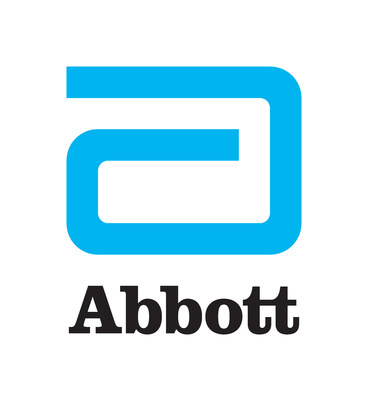Abbott Announces First Step Toward Its Software-Guided Balloon-Expandable TAVI System to Treat Aortic Stenosis
- The investigational transcatheter aortic valve implantation (TAVI) system will complement Abbott's Navitor™ TAVI system for aortic stenosis, a common and life-threatening heart valve disease
- The investigational system is designed to offer best-in-class heart blood flow, ease of use and precision
- Approximately 9% of older Americans have aortic stenosis1
ABBOTT PARK, Ill., Nov. 25, 2024 /PRNewswire/ -- Abbott (NYSE: ABT) today announced the first patient procedures with its investigational transcatheter aortic valve implantation (TAVI) balloon-expandable system for treating symptomatic severe aortic stenosis. This investigational Abbott TAVI system is the first step toward Abbott's software-guided balloon-expandable TAVI system and is designed to build a foundation for artificial intelligence (AI) guided procedures. Once the investigational balloon-expandable system completes clinical development and is approved by regulatory authorities, Abbott's structural heart portfolio will offer physicians another TAVI management option to meet the patient's needs along with the company's Navitor™ TAVI system, which is already commercially available.
The aortic valve is a heart valve that controls the flow of oxygen-rich blood to the body. With age, calcium may build up in the valve and cause it to narrow – a condition known as aortic stenosis – resulting in the heart needing to work harder to pump blood through the valve. Left untreated, aortic stenosis can cause symptoms, such as chest pain, shortness of breath and fainting, and it can weaken the heart and become life-threatening. Patients who are at risk of open-heart surgery due to age, frailty or having multiple other conditions may benefit from minimally invasive treatment options where a device is delivered to the heart through an artery in the leg. Aortic stenosis remains the most common primary valve disease and its prevalence increases with age, ranging from approximately 2% in adults 70-80 years of age to 9% in adults older than 80 years.1
The investigational system is a type of balloon-expandable TAVI device, which works by crimping the new heart valve on a deflated balloon. The balloon with the mounted valve is then inserted into the body through an artery in the groin and routed up to the heart. Once properly positioned inside the narrowed heart valve, the balloon is inflated to expand the new valve, taking over the function of the patient's narrow native heart valve. The balloon is then deflated and removed from the body.
"Transcatheter aortic valve implantation treatment has benefitted both physicians and patients over the years, but physicians have come to understand one device does not fit all their patients with aortic stenosis," said Azeem Latib, M.D., section head and director of interventional cardiology and director of structural heart interventions at Montefiore Health System, who conducted the first procedures with the device alongside cardiac surgeon, Vinayak Bapat, M.D., chair of cardiothoracic surgery at the Minneapolis Heart Institute. "We, and hospitals worldwide, remain focused on helping this growing patient population by investigating and providing expanded treatment options that adapt to the unique needs and anatomies of patients."
Continued research and expansion of TAVI solutions is necessary for the industry as the needs of physicians and patients evolve. Leveraging insights from physicians, the latest technology advancements and key learnings from the company's TAVI product portfolio, Abbott has developed this differentiated TAVI platform with the objective of building a foundation for the incorporation of AI-guided procedural capabilities. The goal is to enhance ease of use and precision, while offering best-in-class hemodynamic performance, or blood flow through the valve.
"Abbott's experience in the TAVI market gives us a unique understanding of the remaining unmet needs, and we're applying this knowledge to develop future therapies to close that gap," said Sandra Lesenfants, senior vice president of Abbott's structural heart business. "By closely partnering with physicians on research into new innovations, we're positioned to advance investigational therapies that have the potential to transform patient treatment."
The first-in-human procedures were successfully conducted at the Republican Centre of Emergency Medicine in Tashkent, Uzbekistan, in collaboration with site principal investigator, interventional cardiologist, Saidamir Djafarov, M.D.
For U.S. important safety information on Navitor, visit https://abbo.tt/NavitorISI.
About Abbott
Abbott is a global healthcare leader that helps people live more fully at all stages of life. Our portfolio of life-changing technologies spans the spectrum of healthcare, with leading businesses and products in diagnostics, medical devices, nutritionals and branded generic medicines. Our 114,000 colleagues serve people in more than 160 countries.
Connect with us at www.abbott.com and on LinkedIn, Facebook, Instagram, X and YouTube.
1 Iung B, Vahanian A. Epidemiology of valvular heart disease in the adult. Nat Rev Cardiol. 2011;8:162-72.
SOURCE Abbott
For further information: Abbott Media: Brent Tippen, (415) 672-8525, brent.tippen@abbott.com; Abbott Financial: Michael Comilla, (224) 668-1872, michael.comilla@abbott.com
 BACK TO PRESS RELEASES
BACK TO PRESS RELEASES